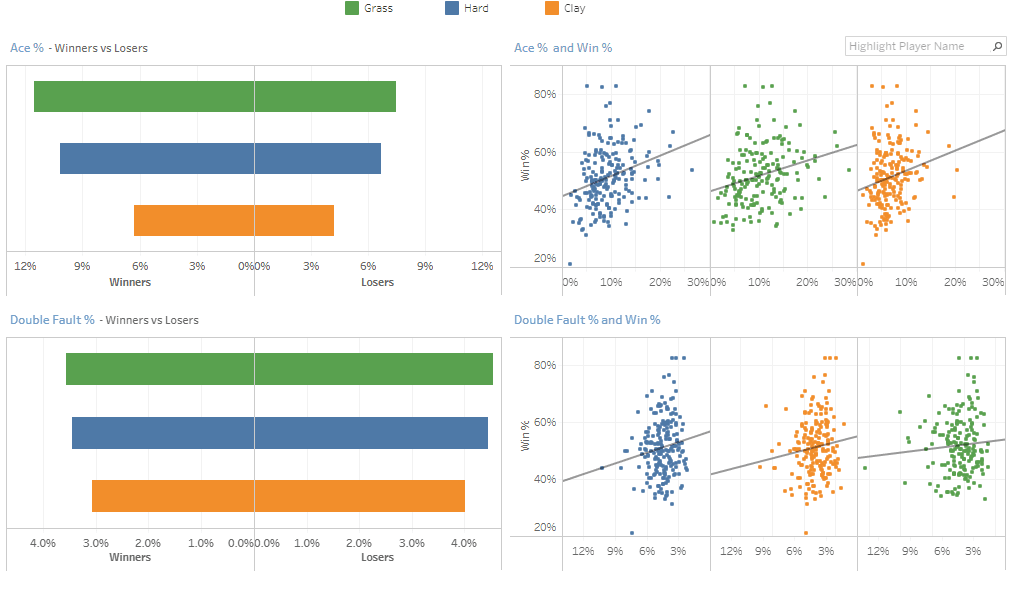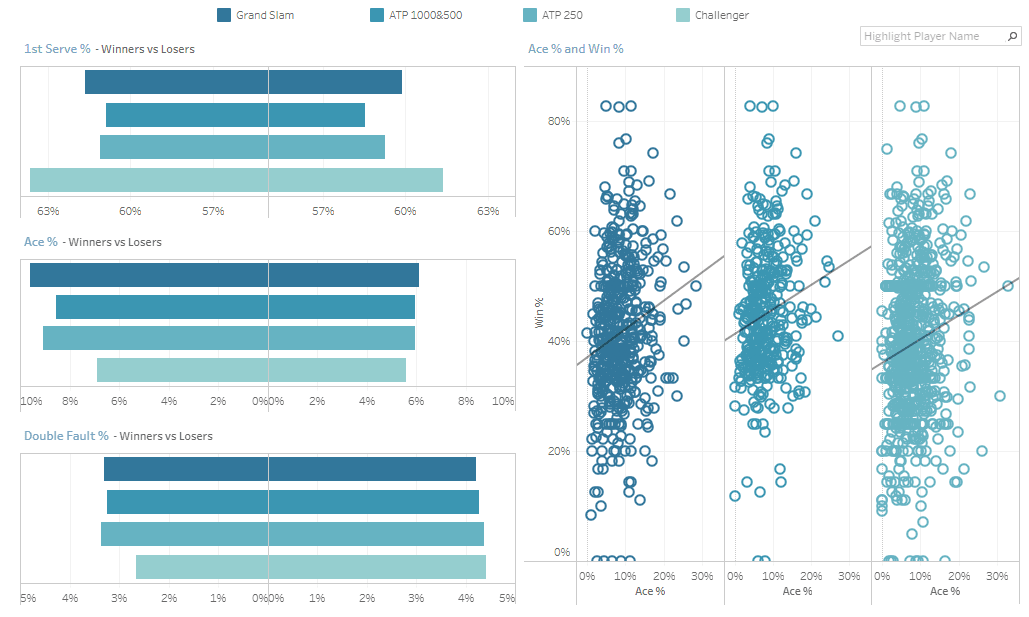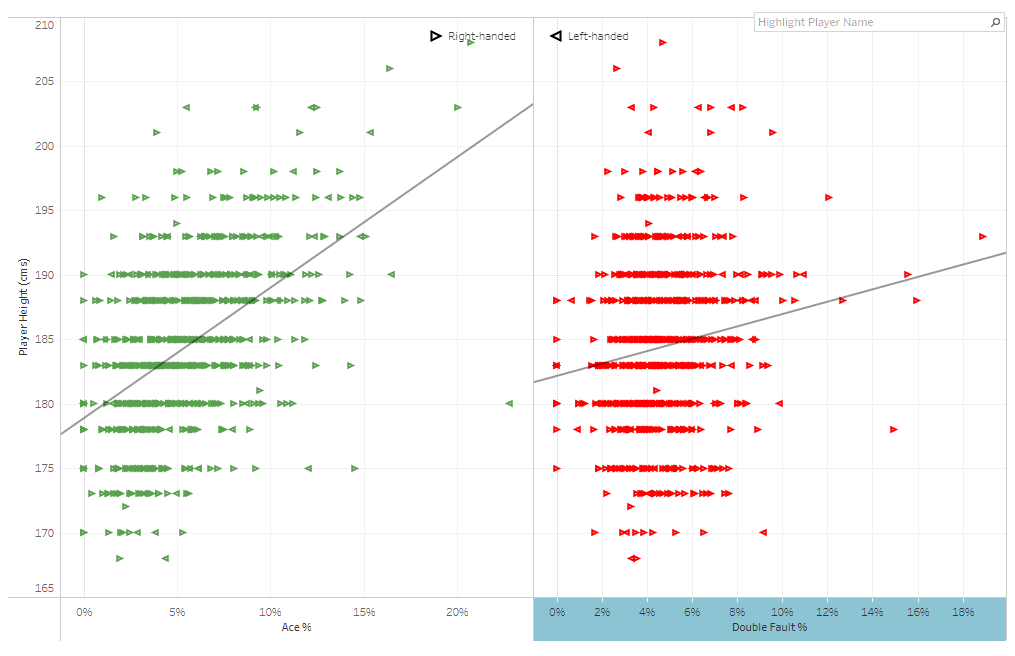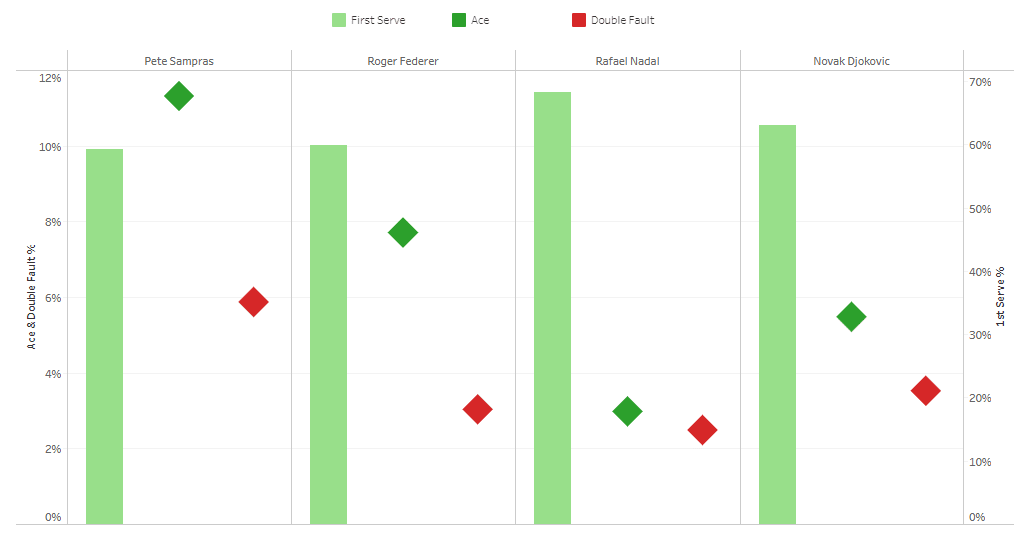Free Data Analytics Course
Jumpstart your journey with 25 essential learning units in data analytics. No cost, just knowledge.
A former professional hockey player, Springboard alum Jorge Marin now channels his love for competitive sports into tennis, which he plays at the USTA 4.5 level–the third highest ranking for amateur tennis, according to the National Tennis Rating Program.
Tennis is commonly hailed as one of the toughest sports to master given the variety of physical, technical, tactical, and mental skills required–demanding hand-eye coordination, flexibility, agility, strength and speed. Intriguingly, in spite of the complexity associated with truly mastering the sport, the most important predictor of a player’s success is the serve.

As the first shot, it is the only shot in the game performed with no influence from the opponent, and it sets up the rest of the game. A weak serve leaves room for the opponent to pounce on the ball–and seize control–and the player who serves most tends to have more stamina left over.
While enrolled in Springboard’s Data Analytics Career Track, Jorge Marin, who was transitioning from a career in operations and business development, decided to create a capstone project where he could analyze the importance of serves in tennis in influencing a player’s success on the court.
“Like in sports, I put a lot into my career change because I demand the best of myself to keep improving everyday,” said Jorge, who is now a data analyst at Homie, a real estate software company. “And just like I bring hockey skills to complement my tennis, I bring business consulting skills to complement my analyses.”
About the project
Jorge used data from 53,000+ Association of Tennis Professionals (ATP) Tour matches between 2000-2017 to analyze the importance of this single shot in the professional men’s tour. Data on serve speed or placement were not publicly available at the time, but he gathered data on first serve percentage (the number of times one player had the first serve relative to his opponent), as well as aces and double faults (other techniques used by tennis players to achieve a score advantage), and how it affected a player’s rank in the ATP’s top 200.
“There’s a paradox that some players -some all-time greats even- have built entire careers on the foundation of this single shot,” said Jorge. “The serve is the only shot in the sport that is performed with no influence from the opponent, which is a very singular thing, and I wanted to understand to what extent it is decisive in the game at the different levels of professionalism and on different surfaces.”
Using a range of data visualization and analysis techniques, he determined the decisiveness of these different techniques in enabling a player to win across a range of variables, including different types of courts (grass, hard, clay), player height, and different player levels.
“While my analysis proves that the sport as a whole has emphasized this single shot, it is also true that the most recent dominating champions (Djokovic and Nadal) have built their success on relatively weak serves and low ace-to-double-fault margins compared to the previous GOATs, Federer and Sampras,” said Jorge, using a tennis acronym that stands for Greatest of All Time.
“The bottom line of the analysis is that serve parameters are definitely and increasingly relevant features to predict wins and rankings, especially for players ranked between 15 and 100 in the ATP Tour.”
Following is Jorge’s capstone project as it appears on Tableau. To view the original, click here. Due to limitations with embedding, the graphs pictured on this page are not interactive.
Get To Know Other Data Analytics Students
Cleo Valencia
Student In The Data Analytics Bootcamp at Springboard
Yogita Nesargi
Data Engineer at Deloitte
Gilles Ngomeni
Sales Analyst at Medline Industries
The Serve, Increasingly Crucial to Success in Pro Men’s Tennis
by Jorge Marin
An oddity in a highly complex discipline
Tennis is widely accepted as one of the hardest individual sports to master due to the variety of physical, technical, and mental skills required. However, there is paradoxically one shot that appears to be narrowly related to success. This is the serve, the only shot performed with no influence from the opponent, often used to start- and often end-points. With data from 53,000+ ATP matches between 2000 and 2017, this analysis proves and measures the importance of this single shot in the professional men’s tour.
Note: Data on serve speed or placement were not publicly available at the moment of this study.

Professional tennis players are serving better every day
Is the overused statement “players are now serving better than ever” actually true?
At first glance on the evolution of the available serve parameters, we see that during the first decade of the century, serve was indeed drastically perfected in men’s tennis. “Pistol” Pete Sampras retired as the GOAT in 2002. Were players trying to imitate and his serve-and-volley style to reach the vacant throne? In the following decade, players continued to perfect this shot and to take more risks, with Ace percentages increasing significantly, with the tradeoff being a slight increase in double faults and points played on second serve overall.

Ace, the difference-maker
Find your favorite player and click on him to see all his serving averages!
First Serve – In addition to ability, First Serve % relates to the amount of risk players are willing to take in attempting to earn aces. Tere is no strong correlation between having a high first serve % and ranking higher amongst the world’s top-200. So, is it worth taking risks?

Ace – the ability to get “free points” is very closely related to ranking higher, so taking risks with the first serve pays off in professional tennis.

Double Fault – avoiding losing points on the serve is obviously advisable, but doing so does not strongly relate to ranking lower. Taking risks on the serve is the way to go! NOTE: all Double Fault axes in the analysis are reversed since “the less, the better.”

“Free points” inexorably gain ground
So getting Aces is closely correlated with ranking higher among the ATP’s top 200. Has the relationship become stronger over time or is the Isner case an exception? Click on your favorite tennis player to see the detail over time!
2000-02 – It’s not surprising that great servers like Sampras, Kuerten and Ivanisevic were winning majors at the beginning of the century.

2008-10 – At the end of the decade, Aces were becoming even more to move up the ATP ranking. However, Nadal amazingly won 50% of all Majors during this period with very modest ace percentages. Check how he compares to other top players.

2016-17 – Aces are still crucial to rankings. Isner, a top ATP server, significantly improved his ace % from 2008-10 to 2016-17, which helped him crack top-10!

Aces are most common on grass, but more decisive on hard courts
Grass is the surface with a higher ratio of aces. However, contrary to the widespread belief, serve effectiveness gives higher options of winning on hard surfaces! Looking at the double fault averages on grass we may think players are taking too many risks with the serve on turf.
Predictably, players are taking less risks with the serve on clay, the slowest surface of all and therefore the hardest one to produce aces on. Although not often mentioned, this seems to be one of the many reasons that explain Nadal’s dominance on the surface.
Notice 3 players with outstanding win %? Guess who they are?
Click on a surface in the bar charts to zoom into the detail or search for a player in the search bar!

The Serve becomes crucial at the highest level
Winners have better serving ratios overall compared to losers, constantly and at all levels of the sport. Differences between the Challenger Series, where aspiring professionals compete, and the ATP Tour are significant. At the professional level, players are making fewer first serves and more double faults in search of “free points,” which peak at the Grand Slam level.
In the Challenger Series, players don’t need to serve as aggressively to succeed, possibly due to more unforced errors at that level, while it can be said that it takes a lot of “acing” to break into the pros.

Advantage: Big guys
Three of the best serves the ATP Tour has seen in the last two decades are John Isner, Ivo Karlovic and Reilly Opelka (Reilly is not included in this analysis). What do they have in common? They are all well over 2 meters or 6’6 tall!
Height is very strongly correlated to the perfect serve; that is, getting the highest possible percentage of aces and the lowest possible amount of double faults.

Rafael Nadal, a rare bird among GOATs (Greatest of All Time)
We have learned that aces are crucial to results and rankings among the world’s top 200. Let’s take a look at the GOATs. Pete Sampras played at a time when the focus was not on the serve as much and conquered 14 Grand Slams making an art of the serve and volley game. He retired as the best male player the sport had seen with outstanding ace stats.
As we saw, players focused more on serving in the early 2000s, when Roger Federer (20 Grand Slams) started crushing every existing record, curiously with similar first serve percentages and nearly identical margin between ace and double fault ratios as Sampras.
Then Rafael Nadal (20) and Novak Djokovic (18) took over and are destined to beat records. They both show a new pattern with significantly thinner margins between ace and double fault percentages and a higher percentage of first serves, relying less on the serve to make a difference.

Epilogue
Tennis is a complex sport requiring many skills. However, data shows that the serve is crucial to the game and a difference-maker at the professional level.
Here are some key insights to draw from this analysis:
- The serve can boost results, but tennis remains a complex sport. Some players are able to perform highly without extraordinary serve stats.
- The serve is not as decisive at grassroots and amateur levels, so players need to master a wide range of shots to make it to the pros.
- Once in the world’s top 200 players, an effective serve correlates very strongly to ranking and results.
- Pros know this single shot can make a difference in their careers. With time, they are perfecting it and taking more and more risks to win aces.
- This is especially significant on hard and grass courts. Players without an outstanding serve generally do better on clay.
With increased data collection in tennis, it would be interesting to include aspects such as speed, placement, server positioning or height of the impact in a future analysis.
Since you’re here…
Considering a career in data analytics? We can get you there. Don’t take our word for it – check out our student reviews. After just 6 months of study in our fully flexible Data Analytics Bootcamp, we’ll boost you into a job in the field, guaranteed. Get started now with our free data analytics curriculum.
Since you’re here…
Considering a career in data analytics? We can get you there. Don’t take our word for it – check out our student reviews. After just 6 months of study in our fully flexible Data Analytics Bootcamp, we’ll boost you into a job in the field or your tuition back. Get started now with our free data analytics course.






